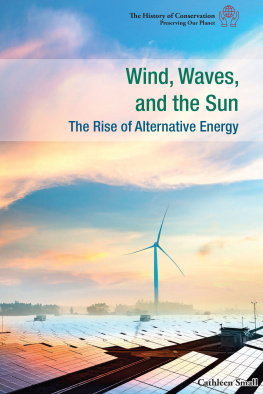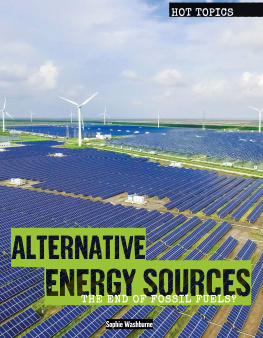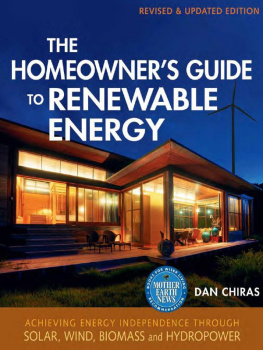
| The Manchester Physics Series |
| General Editors |
| J.R. FORSHAW, H.F. GLEESON, F.K. LOEBINGER |
School of Physics and Astronomy,
University of Manchester |
| Properties of Matter | B.H. Flowers and E. Mendoza |
Statistical Physics
Second Edition | F. Mandl |
Electromagnetism
Second Edition | l.S. Grant and W.R. Phillips |
| Statistics | R.J. Barlow |
Solid State Physics
Second Edition | J.R. Hook and H.E. Hall |
| Quantum Mechanics | F. Mandl |
| Computing for Scientists | R.J. Barlow and A.R. Barnett |
The Physics of Stars
Second Edition | A.C. Phillips |
| Nuclear Physics | J.S. Lilley |
| Introduction to Quantum Mechanics | A.C. Phillips |
| Dynamics and Relativity | J.R. Forshaw and A.G. Smith |
| Vibrations and Waves | G.C. King |
| Mathematics for Physicists | B.R. Martin and G. Shaw |
Particle Physics
Fourth Edition | B.R. Martin and G. Shaw |
| Physics of Energy Sources | G.C. King |
This edition first published 2018
2018 John Wiley & Sons, Ltd
All rights reserved. No part of this publication may be reproduced, stored in a retrieval system, or transmitted, in any form or by any means, electronic, mechanical, photocopying, recording or otherwise, except as permitted by law. Advice on how to obtain permission to reuse material from this title is available at http://www.wiley.com/go/permissions.
The right of George C. King to be identified as the author(s) of this work has been asserted in accordance with law.
Registered Offices
John Wiley & Sons, Inc., 111 River Street, Hoboken, NJ 07030, USA
John Wiley & Sons, Ltd., The Atrium, Southern Gate, Chichester, West Sussex, PO19 8SQ, UK
Editorial Office
The Atrium, Southern Gate, Chichester, West Sussex, PO19 8SQ, UK
For details of our global editorial offices, customer services, and more information about Wiley products visit us at www.wiley.com.
Wiley also publishes its books in a variety of electronic formats and by print-on-demand. Some content that appears in standard print versions of this book may not be available in other formats.
Limit of Liability/Disclaimer of Warranty: While the publisher and author(s) have used their best efforts in preparing this book, they make no representations or warranties with respect to the accuracy or completeness of the contents of this book and specifically disclaim any implied warranties of merchantability or fitness for a particular purpose. It is sold on the understanding that the publisher is not engaged in rendering professional services and neither the publisher nor the author shall be liable for damages arising herefrom. If professional advice or other expert assistance is required, the services of a competent professional should be sought.
Library of Congress Cataloging-in-Publication Data
Name: King, George C., author.
Title: Physics of energy sources / George C. King, University of Manchester, UK.
Other titles: Manchester physics series.
Description: First edition. | Chichester, UK ; Hoboken, New Jersey : John Wiley & Sons, Inc.,
[2018] | Series: Manchester physics series
Identifiers: LCCN 2016050484 (print) | LCCN 2016054262 (ebook) | ISBN
9781119961673 (hardback ; cloth) | ISBN 111996167X (hardback ; cloth) |
ISBN 9781119961680 (pbk.) | ISBN 1119961688 (pbk.) | ISBN 9781118698440
(pdf) | ISBN 9781118698426 (epub)
Subjects: LCSH: Power resources. | Renewable energy sources. | Physics.
Classification: LCC TJ163.2 .K53 2018 (print) | LCC TJ163.2 (ebook) | DDC
621.3101/53dc23
LC record available at https://lccn.loc.gov/2016050484
Cover design: Wiley
Cover image: Top circle: Gemasolar plant SENER/TORRESOL ENERGY;
Bottom circle: Courtesy of ESA https://images.nasa.gov/#/details-PIA03149.html
But why are such terrific efforts made just to find new particles? asked Mr Tompkins.
Well, this is science, replied the professor, the attempt of the human mind to understand everything around us, be it giant stellar galaxies, microscopic bacteria, or these elementary particles. It is interesting and exciting, and that is why we are doing it.
From Mr Tompkins Tastes a Japanese Meal, by George Gamow (Mr Tompkins in Paperback, Cambridge University Press (1965), p.186).
To my family: Michele,
May, George and May.
Editors' preface to the Manchester Physics Series
The Manchester Physics Series is a set of textbooks at first degree level. It grew out of the experience at the University of Manchester, widely shared elsewhere, that many textbooks contain much more material than can be accommodated in a typical undergraduate course; and that this material is only rarely so arranged as to allow the definition of a short self-contained course. The plan for this series was to produce short books so that lecturers would find them attractive for undergraduate courses, and so that students would not be frightened off by their encyclopaedic size or price. To achieve this, we have been very selective in the choice of topics, with the emphasis on the basic physics together with some instructive, stimulating and useful applications.
Although these books were conceived as a series, each of them is self-contained and can be used independently of the others. Several of them are suitable for wider use in other sciences. Each Author's Preface gives details about the level, prerequisites, etc., of that volume.
The Manchester Physics Series has been very successful since its inception over 40 years ago, with total sales of more than a quarter of a million copies. We are extremely grateful to the many students and colleagues, at Manchester and elsewhere, for helpful criticisms and stimulating comments. Our particular thanks go to the authors for all the work they have done, for the many new ideas they have contributed, and for discussing patiently, and often accepting, the suggestions of the editors.
Finally we would like to thank our publishers, John Wiley & Sons, Ltd., for their enthusiastic and continued commitment to the Manchester Physics Series.
J. R. Forshaw
H. F. Gleeson
F. K. Loebinger
August 2014
Author's preface

We live in a technological age where energy plays a central role. Because of its importance, issues regarding the availability and cost of energy and the environmental impact are never far from the daily news. This book describes the main sources of energy that are available to us together with the underlying physics that governs them. In particular, it deals with nuclear power, solar power, wind power, wave and tidal power. The book also describes the ways in which energy can be stored for future use. Studying the physics of energy sources has various advantages. First, such a study encompasses a wide range of physics from classical physics to quantum physics. In this way it supports other undergraduate courses in the physical sciences and engineering. Secondly, energy sources represent real applications of fundamental physics, and although energy sources are being continuously developed, the underlying physics that governs them remains the same. The book is addressed mainly to science and engineering students, who require knowledge of the physical principles governing the operation of energy sources. It is based on an introductory 24-lecture course entitled Physics of Energy Sources given by the author at the University of Manchester. The course was attended by first- and second-year undergraduate students taking physics or a joint honours degree course with physics, but it should also be useful for students on engineering and environmental science degree courses. The book covers the topics given in the course although it amplifies the material delivered in the lectures. A basic knowledge of differentiation and integration is assumed and simple differential equations are used, while undue mathematical complication and detail are avoided.
Next page












